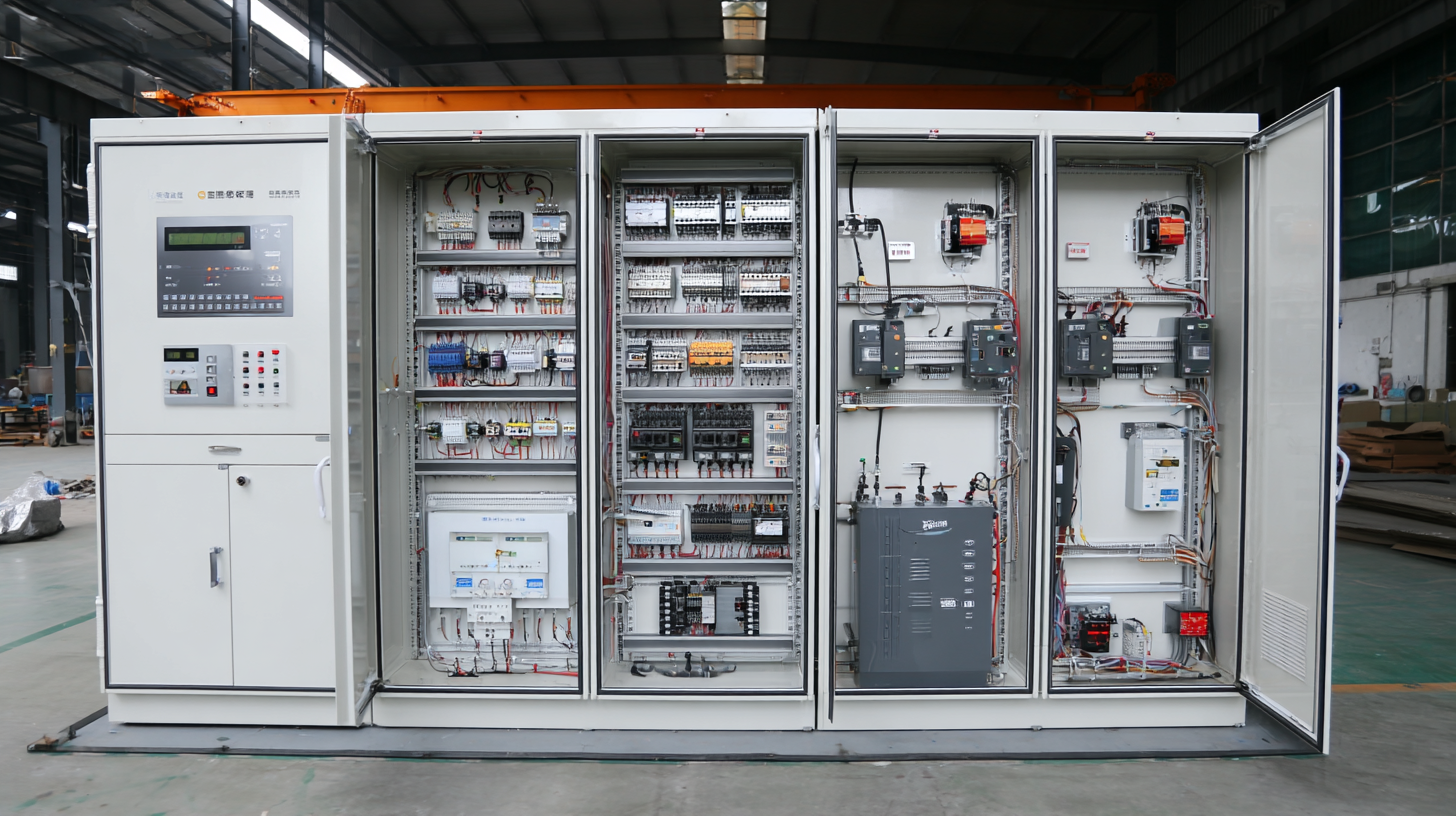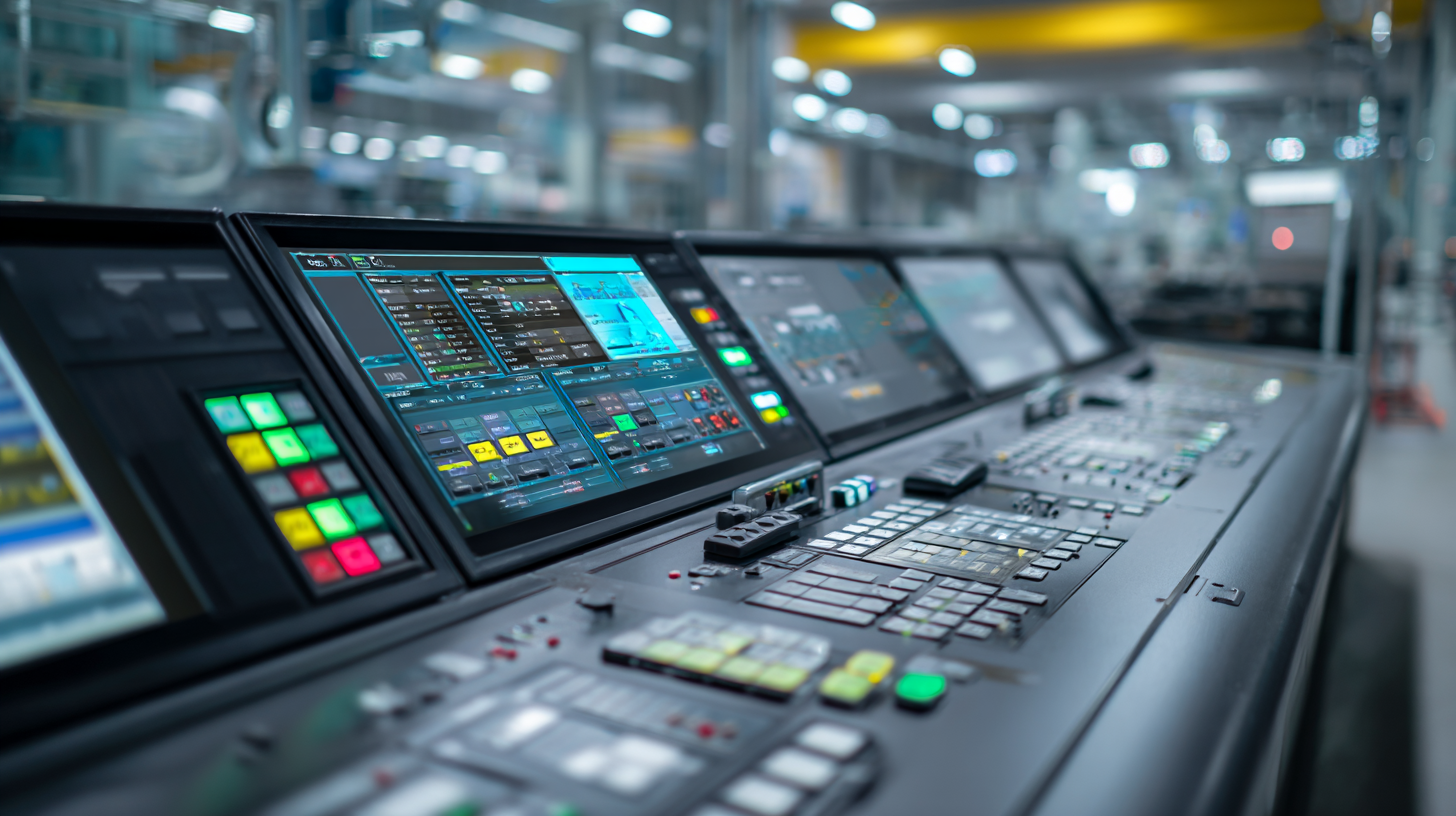How to Optimize Industrial Panel Efficiency: Insights from the Latest Market Trends and Data
In the rapidly evolving industrial landscape, optimizing the efficiency of industrial panels has become a critical focus for manufacturers and engineers alike. As industries strive to enhance productivity and reduce operational costs, understanding the latest market trends and data regarding industrial panel design and functionality is essential. This article aims to provide valuable insights into how businesses can leverage these trends to improve the performance of their industrial panels. By exploring innovative technologies, materials, and practices currently shaping the market, we will outline practical strategies for enhancing panel efficiency. Whether you are an industry veteran or a newcomer, the following guidelines will help you navigate the complexities of industrial panel optimization and embrace the future of efficient manufacturing processes.

Understanding Key Market Trends Shaping Industrial Panel Efficiency
In the rapidly evolving landscape of industrial panels, understanding key market trends is essential for optimizing efficiency. Recent reports indicate that the global industrial panel market is anticipated to grow at a CAGR of 6.5% from 2023 to 2030, driven largely by the increasing need for automation and advanced control systems in manufacturing processes. Factors such as the demand for energy-efficient solutions and the integration of IoT technology are reshaping panel designs, making them not only more efficient but also more adaptable to various industrial requirements.

One critical trend is the shift towards smart panels that incorporate real-time monitoring capabilities. According to a study by Transparency Market Research, manufacturers are increasingly investing in smart technology, leading to a projected rise in smart panel adoption by over 30% in the next five years. This transition not only enhances operational efficiency but also minimizes downtime through predictive maintenance features.
Tips: To leverage these trends, businesses should consider investing in training programs that focus on the latest technologies. Additionally, regular audits of existing panel systems can pinpoint inefficiencies, allowing for timely upgrades. Lastly, collaborating with suppliers who provide insights into upcoming technologies can give companies a competitive edge in optimizing their panel solutions.
Analyzing Data-Driven Strategies for Enhancing Panel Performance
In the rapidly evolving landscape of industrial panel systems, data-driven strategies have become paramount for enhancing performance and ensuring efficiency. Recent market insights suggest that a meticulous understanding of market microstructures and sentiment fluctuations is essential in this sector. For instance, a comprehensive analysis indicates that companies that successfully adapt to market trends can achieve operational efficiencies of up to 20%. This highlights the need for businesses to integrate robust data analytics to refine their decision-making processes and optimize resource allocation effectively.

Furthermore, the emergence of agile and adaptive data analysis tools is transforming how organizations approach the optimization of industrial panels. In the Web3 era, where technology is advancing at an unprecedented rate, continuous iteration and integration of new technologies become vital. Reports show that companies that prioritize user experience and systematically implement improvements can expect to see a 15% increase in panel performance efficiency. By leveraging real-time data and analytics, organizations can not only enhance the operational capacity of their panels but also respond proactively to dynamic market conditions, ensuring sustained competitiveness.
Implementing Innovative Technologies to Boost Efficiency in Industrial Panels
In the modern industrial landscape, optimizing panel efficiency is crucial for enhancing productivity and sustainability. Implementing innovative technologies plays a pivotal role in this transformation. Advancements such as smart monitoring systems and AI-driven analytics enable real-time assessments of panel performance, allowing for timely adjustments and reducing downtime. By leveraging these technologies, businesses can streamline operations and minimize energy consumption.
Tip: Consider integrating IoT devices that provide predictive maintenance insights. This proactive approach helps identify potential issues before they escalate, ensuring that your panels operate at peak performance.
Another aspect is the adoption of energy-efficient components like variable frequency drives (VFDs) and advanced relay systems. These components help in regulating energy use and optimizing load management, which significantly enhances overall panel efficiency.
Tip: Regularly audit your panel configurations to ensure that all components are working harmoniously. This can uncover opportunities for upgrades or replacements that contribute to better energy efficiency and reduced operational costs.
Industrial Panel Efficiency Optimization: Market Trends
Best Practices for Maintenance and Durability in Industrial Panel Systems
Maintenance and durability are critical factors in optimizing the efficiency of industrial panel systems, particularly in the context of solar photovoltaic (PV) technologies. Regular maintenance is essential to ensure that panels operate at peak performance throughout their lifespan, which can be around 25 to 30 years. Effective operations and maintenance strategies include routine inspections, performance monitoring, and cleaning protocols designed to mitigate dust accumulation, which has been shown to significantly impact energy yield. Implementing advanced cleaning techniques can enhance system performance, especially in environments with high dust exposure.
Furthermore, the adoption of innovative recycling technologies for silicon-based PV panels presents opportunities to improve sustainability and durability in industrial panel systems. By addressing the challenges associated with recycling these materials, organizations can not only minimize environmental impacts but also enhance the lifecycle of their solar installations. As market trends continue to evolve, integrating best practices for maintenance and adopting cutting-edge recycling solutions will be crucial for boosting the long-term efficiency and durability of industrial panel systems.
Evaluating Cost-Effectiveness of Upgrading Industrial Panel Infrastructure
Upgrading industrial panel infrastructure is not just a necessity for improving operational efficiency; it also offers significant cost-effectiveness when performed strategically. Recent analyses indicate that industries adopting advanced energy-efficient materials can achieve up to 30% reductions in energy costs. This aligns with findings from EERE reports which highlight the significant role of innovative building technologies in fostering industrial efficiency. Investing in state-of-the-art industrial panels also not only enhances productivity but can lead to compliance with stricter environmental regulations, mitigating potential financial penalties related to industrial air pollution, which was shown to have substantial economic costs across Europe.
Tips for Cost-Effectiveness:
- Conduct thorough cost-benefit analyses before initiating upgrades — tools such as The Green Book provide solid frameworks for appraisal.
- Leverage data analytics to evaluate the impact of new panel technologies on operational performance and energy consumption.
Moreover, research on industrial structure upgrading reveals that the integration of smart information infrastructure significantly bolsters economic resilience in urban settings. Companies that invest in such infrastructures can leverage machine learning techniques for more efficient supply chain management, which has been shown to enhance long-term business sustainability.
Related Posts
-

Essential Techniques for Maximizing Industrial Panel Performance in Your Operations
-

Essential Checklist for Selecting the Best Industrial Rugged PC for Your Needs
-

Innovative Uses of Rugged PCs Across Various Industries
-

Innovative Applications of Rugged PCs in Extreme Environments
-

Understanding the Benefits of Ruggedized PCs in Harsh Environments
-

10 Unique Industrial Panel PC Solutions for Buyers Worldwide

